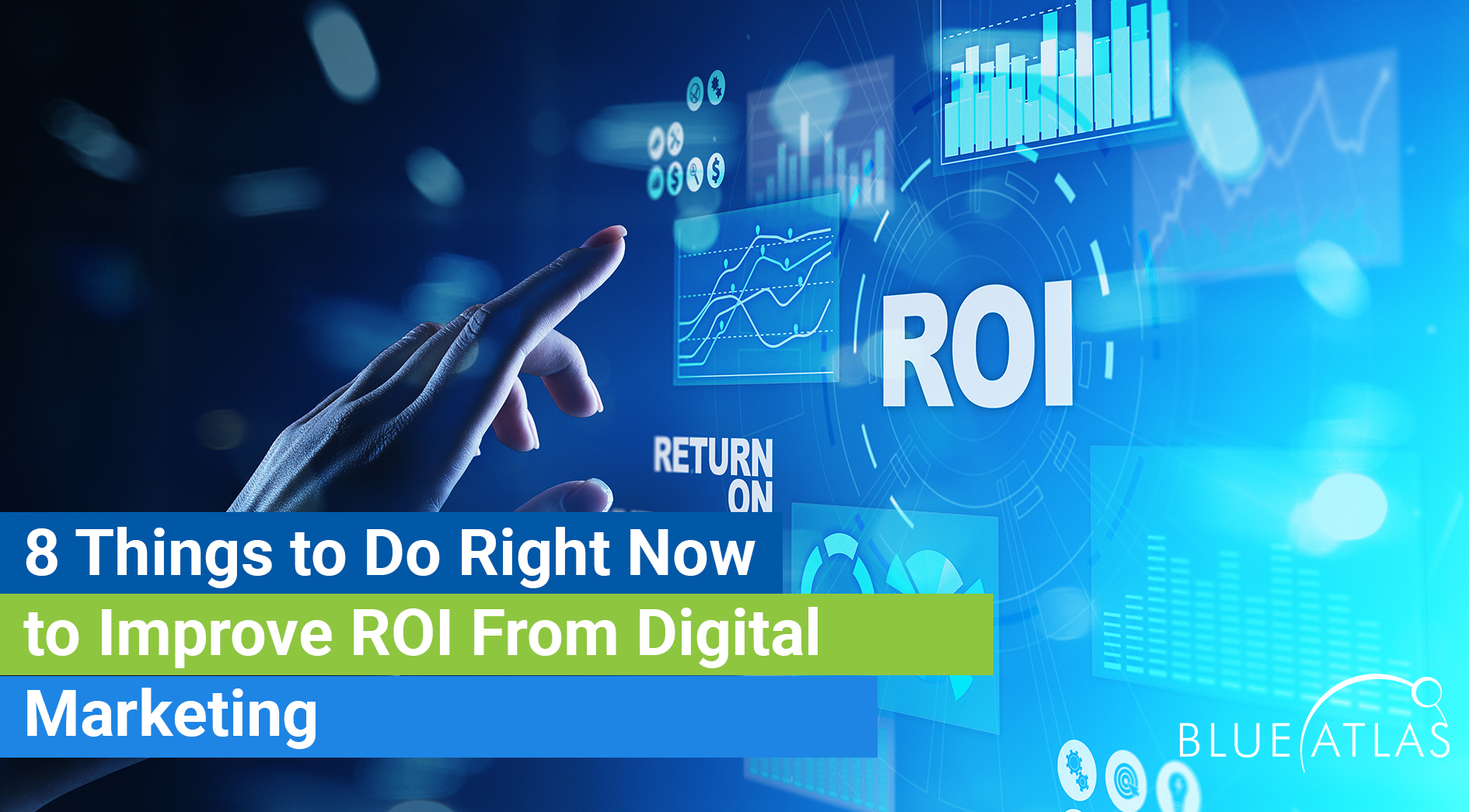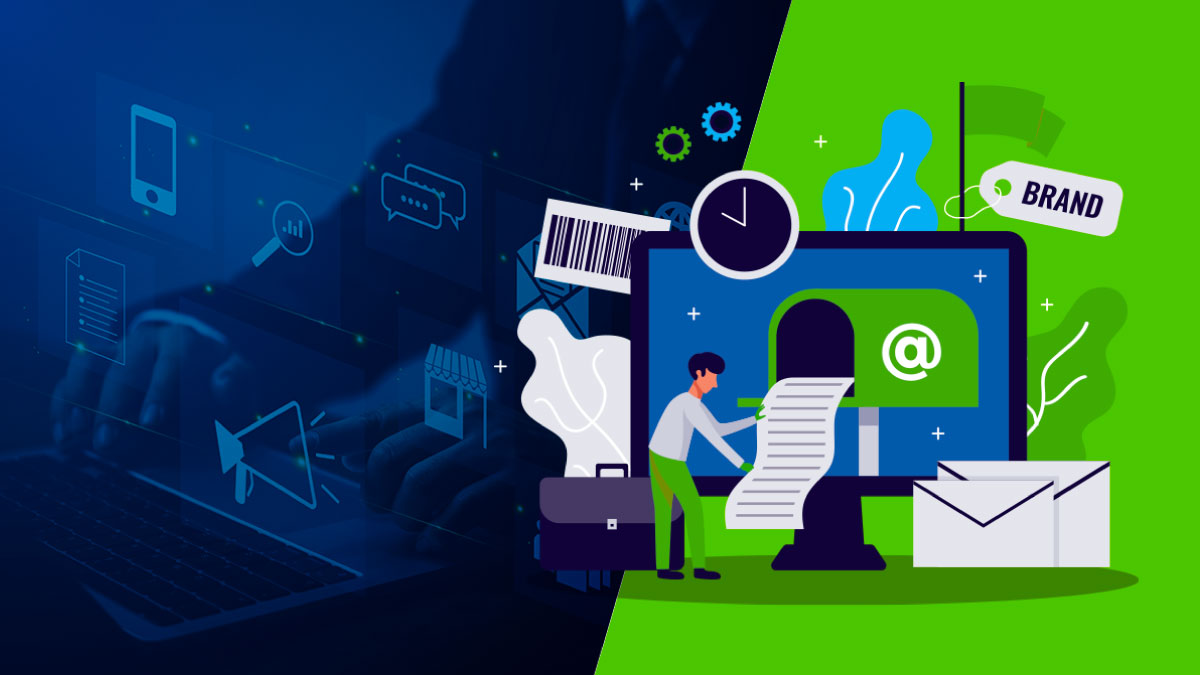Elevate Your Strategy: Marketing Automation Best Practices

Key Insights:
- Discover how to create detailed buyer personas and map customer journeys to tailor your marketing efforts effectively.
- Learn the importance of setting specific, measurable objectives to drive and assess the success of your marketing automation initiatives.
- Understand how to collect and leverage firmographic, technographic, and demographic data to enhance personalization and campaign effectiveness.
- Find out how audience segmentation and personalized messaging can significantly boost engagement and conversion rates.
- Explore the benefits of A/B testing and performance tracking to refine and optimize your marketing strategies for sustained success.
For industrial B2B companies, optimizing marketing automation is crucial for staying competitive.
This article is designed for business owners, operations managers, and marketing managers who want to enhance their marketing strategies.
Implementing these best practices can improve customer engagement, streamline operations, and increase ROI.
Read on to discover actionable insights and practical tips to elevate your marketing efforts in 2024.
10 Marketing Automation Best Practices

Know Your Audience & Understand the Customer Journey
Understanding your audience is fundamental to any successful marketing strategy. Knowing your customers’ pain points, preferences, and decision-making processes enables you to create relevant content that nurtures them throughout their journey.
We, the Blue Atlas, noted that “in order to be effective with lead nurturing, you must understand what your prospect is looking for, how they want to consume the content, and what will help them move to the next stage in the process.”
Try to see the figure below as an example identifying the persona of a new mom named Nancy:
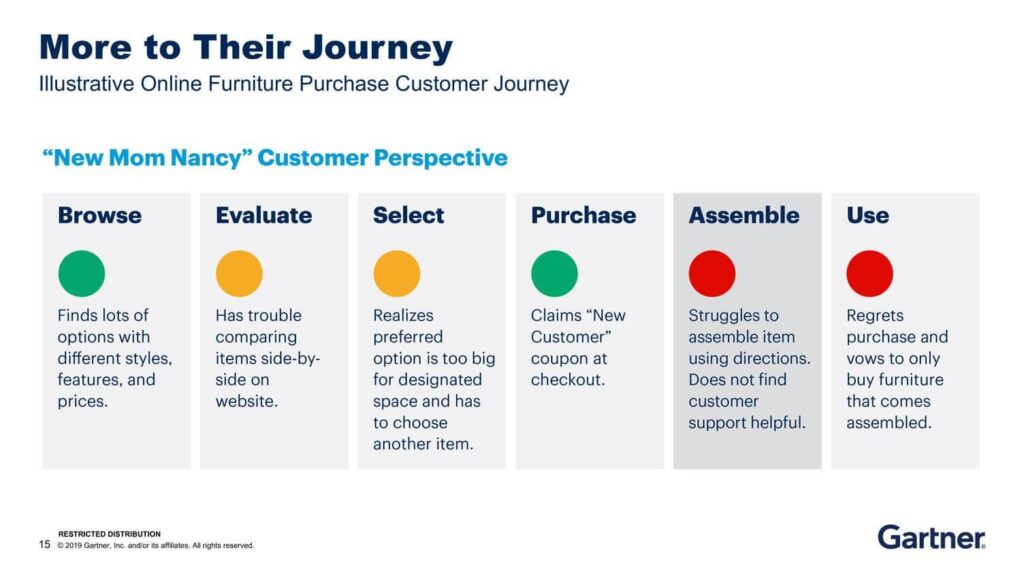
Creating detailed buyer personas is crucial in the B2B space.
According to Close, “In B2B, buyer personas are more focused on the job title, company, and details about the decision-making process. With a longer sales cycle involving medium or high-consideration products, you can’t address small and enterprise businesses equally.”
Customer journey mapping is another essential tool. It visually represents customers’ steps through your marketing funnel, helping you meet their needs and close sales faster.
EngageBay explains, “A customer journey map is a visual representation of the steps customers take as they make their way through your marketing funnel. It allows you to meet their needs and close sales faster.”

Define Clear Goals and Objectives
Setting specific and measurable goals is central to the success of your marketing automation efforts. Clear objectives help guide your strategy and provide benchmarks for measuring success.
HT Media noted that “define specific goals and objectives for your B2B marketing automation efforts, such as increasing lead generation, improving lead nurturing, or enhancing customer retention. Having clear objectives will guide your implementation strategy and help measure success.”
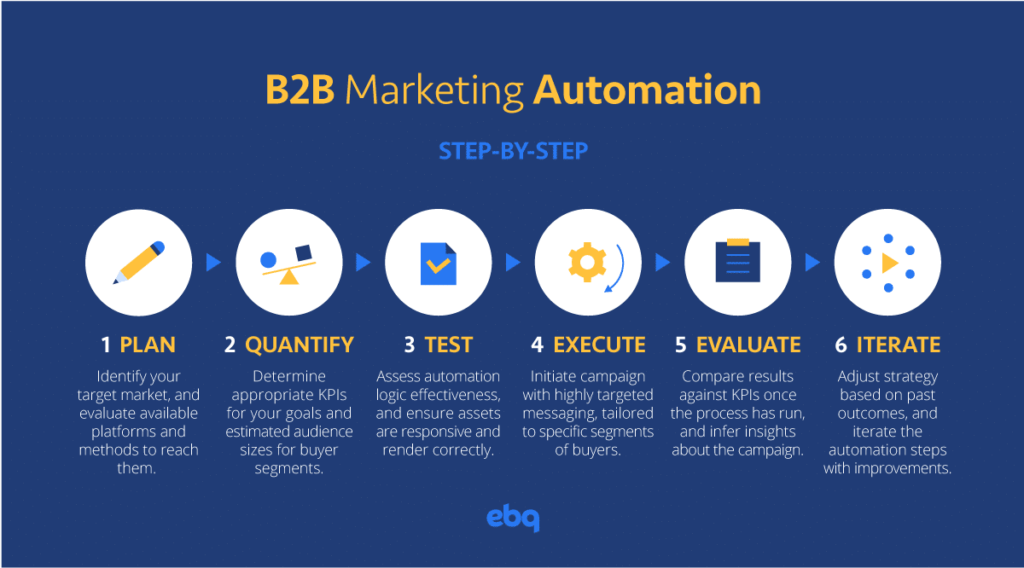
Establish precise goals to implement marketing automation effectively. Examples include increasing lead generation, enhancing customer engagement, and boosting sales conversions.
For instance, Marketo Engage, an Adobe solution, offers tools to streamline marketing processes, personalize customer experiences, and measure the impact of campaigns across multiple channels.
This software facilitates automation across various platforms, such as email, digital ads, social media, and websites, enabling comprehensive campaign management.

Focusing on specific goals, such as improving lead nurturing or customer retention, allows you to tailor your marketing automation strategy to meet these objectives. This approach enhances your campaigns’ efficiency and ensures your efforts align with broader business objectives.
Collect the Right Data
Data collection is essential for personalizing and measuring your marketing campaigns’ impact. Properly collected B2B data enables improved targeting, leading to higher conversion chances.
By segmenting your audience with precise data, you can personalize campaigns to meet specific needs, thus enhancing engagement and conversion rates.
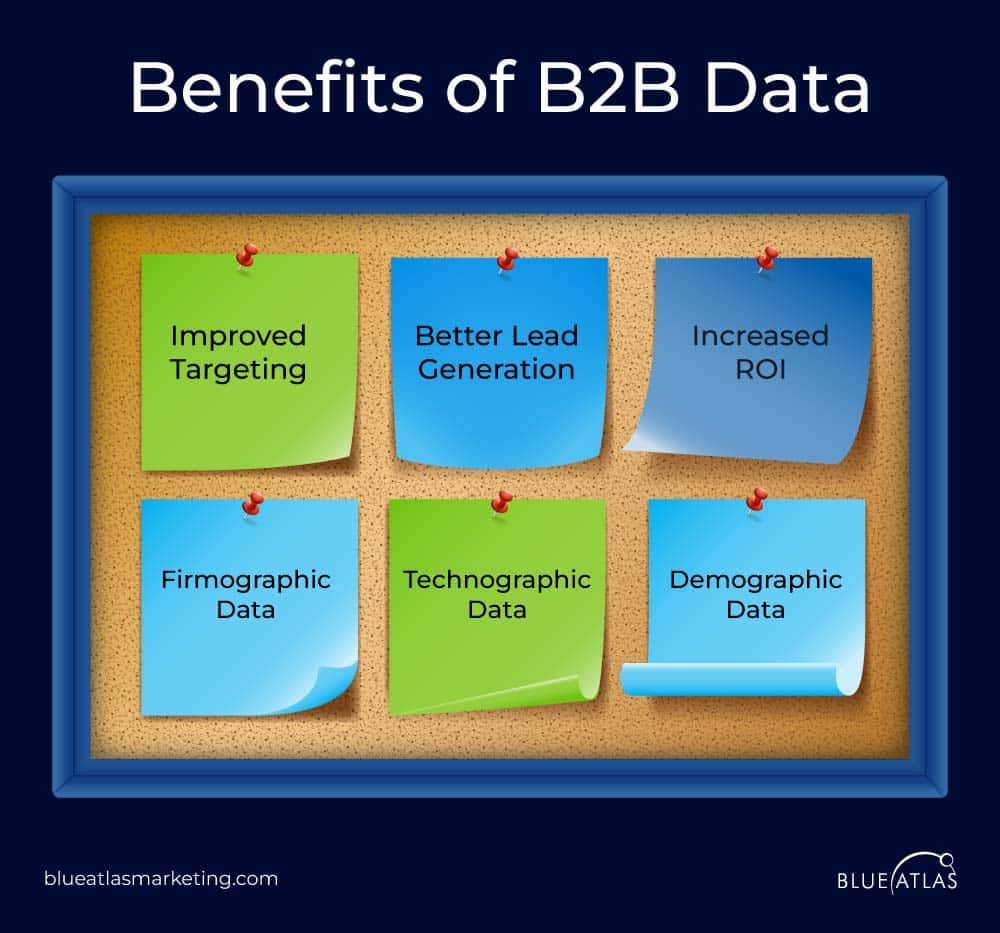
Following ExactBuyer, there are three strategies to do it:
- Improved targeting: Accurate B2B data helps you identify and target the right audience, increasing the likelihood of conversions. With precise data, you can effectively segment your audience and tailor your campaigns to meet their needs.
- Better lead generation: High-quality data allows you to pinpoint new prospects and generate leads with a higher chance of conversion. By understanding their pain points, you can create targeted content that addresses these issues, facilitating more accessible deals for your sales team.
- Increased ROI: Investing in reliable B2B data can lead to significant returns. You can achieve better conversion rates and higher revenue by focusing on the right audience and reducing wasted resources.
Also, understanding various types of data is essential for optimizing marketing automation:
- Firmographic Data: This includes information about a company’s industry, size, location, and revenue. It helps identify target accounts and customize marketing messages to specific industries or company sizes.
- Technographic Data: This covers details about a company’s technology tools. It helps identify companies benefitting from your product or service, allowing you to tailor your marketing messages accordingly.
- Demographic Data: This involves information about the people within a company, such as job titles, seniority, and departments. This data is essential for identifying key decision-makers and crafting messages that address their needs.
Segment Your Audience
Audience segmentation is crucial for delivering targeted and effective communication. By segmenting your audience, you can refine your marketing strategies to meet the specific needs of different groups, resulting in higher engagement and conversion rates.
Merkle says, “Segmented campaigns also get proven results: They have a 14.31% higher open rate, a 9.37% lower unsubscribe rate, and 2X the clicks.”
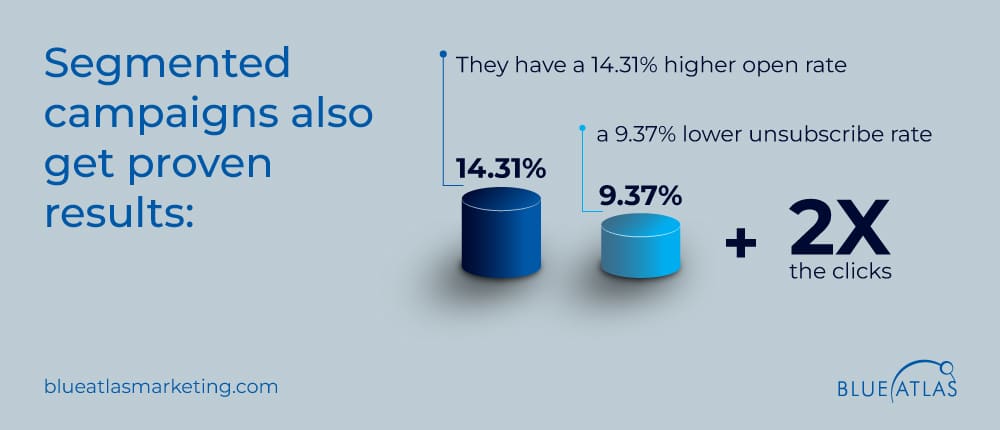
Here are some standard criteria for audience segmentation listed by Brevo:
- Demographic Segmentation: This involves dividing your audience based on concrete information such as age, gender identity, income, job title, or organization type. It provides a foundational layer of understanding about your audience.
- Psychographic Segmentation: This goes beyond demographics by considering the psychological factors influencing consumer behavior. It includes interests, lifestyle, and values, offering more profound insights into what motivates your audience.
- Behavioral Segmentation: This looks at the actions your audience takes or doesn’t take. Key activities to track include email engagement metrics like open rates and clicks, interactions with your website, purchase history, and product usage.
- Geographic Segmentation: This is particularly useful for businesses with multiple locations or international audiences. You can group contacts by country, region, town, zip code, time zone, or language, allowing for region-specific marketing strategies.
Create Engaging Content
Creating high-quality content is essential for effective lead generation and nurturing in B2B marketing. Quality content attracts potential leads and builds trust and credibility, guiding prospects through the sales funnel. ExactBuyer highlights three aspects:
- Accurate Targeting: High-quality data ensures that your target audience is precise and that your messages reach the right people.
- Risk Reduction: Poor data quality can damage your reputation and lead to compliance issues. High-quality data helps you avoid sending unsolicited emails and violating data privacy laws.
- Resource Efficiency: Accurate data allows you to focus your resources on qualified leads, saving time and minimizing wasted efforts.
To back up these claims, according to the survey by Demand Gen Report, B2B customers increasingly rely on well-researched content backed by data to inform their purchasing decisions. This includes creating:
- Blog Posts: Address industry trends, solve common problems, and showcase your expertise.
- E-books: Offer in-depth insights into specific topics, making them valuable resources for prospects looking to deepen their knowledge.
- Infographics: Simplify complex information and make it easily digestible.
- Webinars: Provide an interactive platform to discuss industry topics and directly engage with your audience.
- White Papers and Case Studies: Offer detailed analyses and real-world examples of how your solutions have benefited other companies.
- Industry Newsletters: Keep your audience informed about industry developments and company updates.
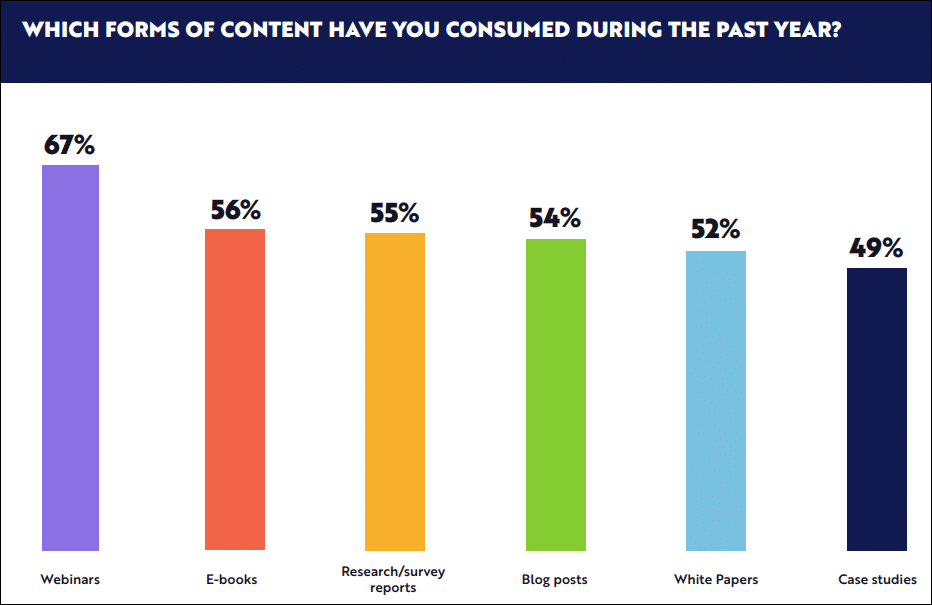
Leveraging a mix of these content types, you can effectively engage your audience, nurture leads, and drive them towards conversion.
Setup Lead Scoring
Lead scoring technique for ranking potential customers and identifying those most likely to purchase.
By evaluating where users are in the buying process and segmenting them based on engagement levels, you can ensure that your sales team targets the most engaged leads, as per Encharge.
Points can be assigned to leads based on various actions and behaviors, such as:
Email Engagement: Actions like opening emails, clicking links, and downloading attachments are tracked.
Website Interactions: Monitoring visits to key pages, time spent on the site, and form submissions.
Content Consumption: Tracking downloads of e-books, attendance at webinars, and blog post reads.
Social Media Activity: Engagements such as likes, shares, and comments on your social media posts.
Purchase Behavior: Considering previous purchases, product usage, and renewal history.
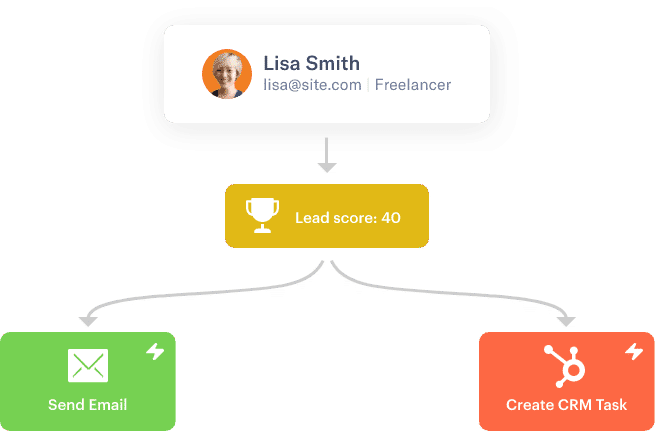
When assigning points to these actions, you can create a scoring system that ranks leads from cold to hot. This system helps your marketing and sales teams prioritize leads and tailor their approach based on their position in the buying journey.
Create Multi-Channel Experiences
Reaching your audience across various platforms is essential for a successful marketing strategy. Multi-channel marketing allows you to engage with your customers through different touchpoints, ensuring a cohesive and consistent message. This approach increases your reach and enhances the customer experience by meeting where they are most active.
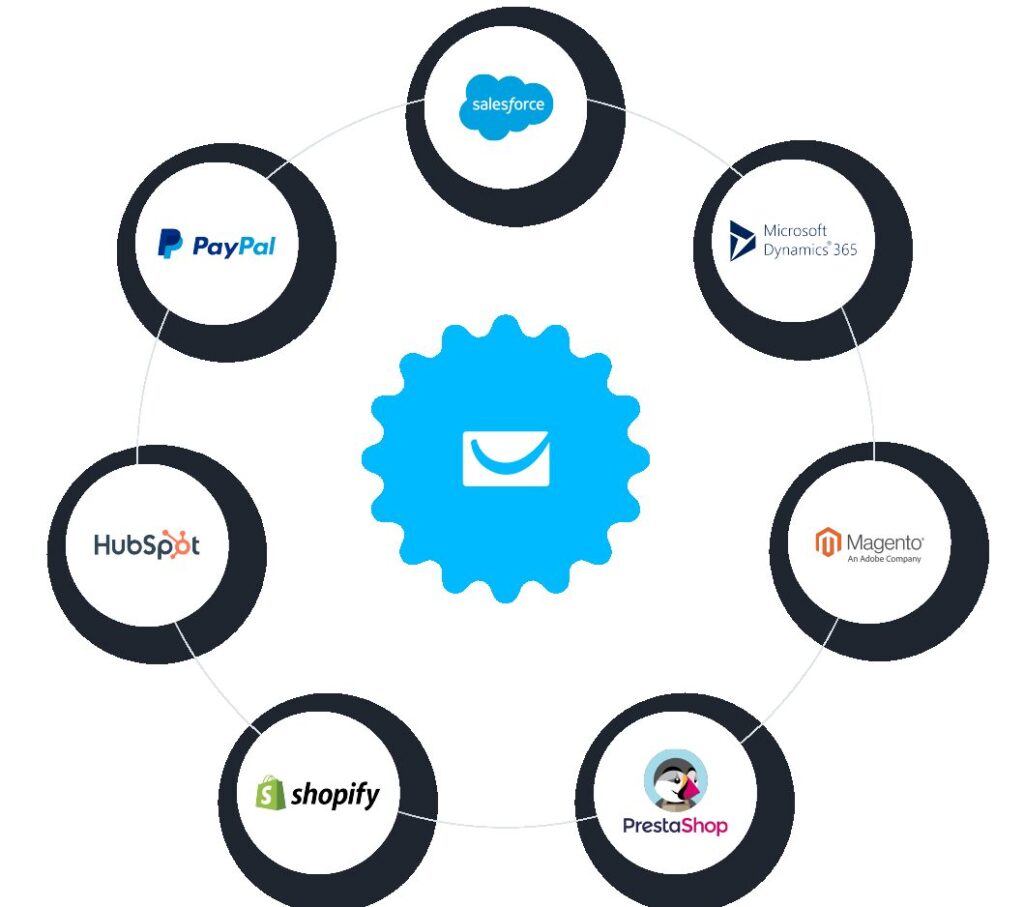
Delivering a consistent experience across multiple channels can be challenging but is essential for customer satisfaction. According to GetResponse, although managing multi-channel marketing can be complex and time-consuming, it is precisely what customers expect.
Using suitable marketing automation tools can help coordinate campaigns across various channels from a single platform.
As noted by Frizbit, implementing a multi-channel strategy involves using multiple platforms to deliver your marketing messages, such as:
- Email: Regular newsletters, promotional offers, and personalized content keep your audience informed and engaged.
- SMS: Short, timely messages can alert customers to critical updates, offers, or reminders.
- Web Push Notifications: These can prompt users to take immediate action, such as completing a purchase or checking out new content.
- Ads: Targeted ads on search engines and social media platforms can drive traffic and generate leads.
- Social Media: Platforms like Facebook, LinkedIn, Twitter, and Instagram allow for direct interaction and engagement with your audience.
The key is to ensure that your messaging is consistent across all platforms, which can be efficiently managed using the right marketing automation tools.
Personalize Your Marketing Messages
Personalization, as demonstrated in various marketing automation examples, is a powerful tool that significantly enhances engagement and conversion rates.
Customizing your marketing messages to meet your audience’s needs and preferences can lead to more meaningful interactions and higher conversion rates.
According to GetResponse, 93% of B2B marketing professionals believe personalization is a crucial driver of revenue growth.

To effectively personalize your content, it’s essential to understand your audience segments and behaviors. Here are some strategies:
- Analyze Online Profiles: Segment your audience into different groups based on demographic information such as age, gender, job title, and location.
- Identify Interests: Determine fundamental interests by analyzing the pages a visitor frequently browses before subscribing to your content.
- Recognize Pain Points: Examine the links your audience clicks on in email campaigns to understand their issues.
- Monitor Social Media Activity: Assess your audience’s content on social media profiles, communities, or blogs to gain insights into their preferences and needs.
WaveOn suggests that you can tailor your marketing messages to address each segment’s needs and interests by examining these behaviors.
Test and Optimize Campaigns
A/B testing is a crucial method for identifying the most effective strategies in your marketing campaigns.
By comparing two versions of an element within your campaign, you can determine which performs better and optimize accordingly.
Regular A/B testing allows marketing teams to fine-tune their strategies, ensuring maximum engagement and conversion rates, exclaimed by TechTarget.

Here are some elements you can A/B test to improve your marketing campaigns:
- Subject Lines: Test different email subject lines to see which ones achieve higher open rates.
- Email Content: Compare different versions of email content to determine which generates more engagement.
- Call-to-Action Buttons: Experiment with different call-to-action buttons to find the most compelling options.
- Images and Graphics: Evaluate the impact of various pictures and graphics on user engagement.
- Landing Page Layouts: Test different designs to see which layout leads to higher conversion rates.
Go and continuously test and optimize to ensure that your marketing efforts are constantly improving and delivering maximum value.
Track Your Performance
Monitoring and tracking performance can assess whether your strategies achieve the desired outcomes and make informed adjustments as needed.
Once your goals are set, it is crucial to identify the key performance indicators (KPIs) that will help you measure success.
As Act-On discussed, these might include, for instance, a 10% increase in Marketing Qualified Leads (MQLs), a 3% boost in your sales pipeline, or a 5% reduction in customer churn. Keeping these KPIs highly visible helps align your sales and marketing teams toward common objectives.
Here are some relevant metrics to consider:
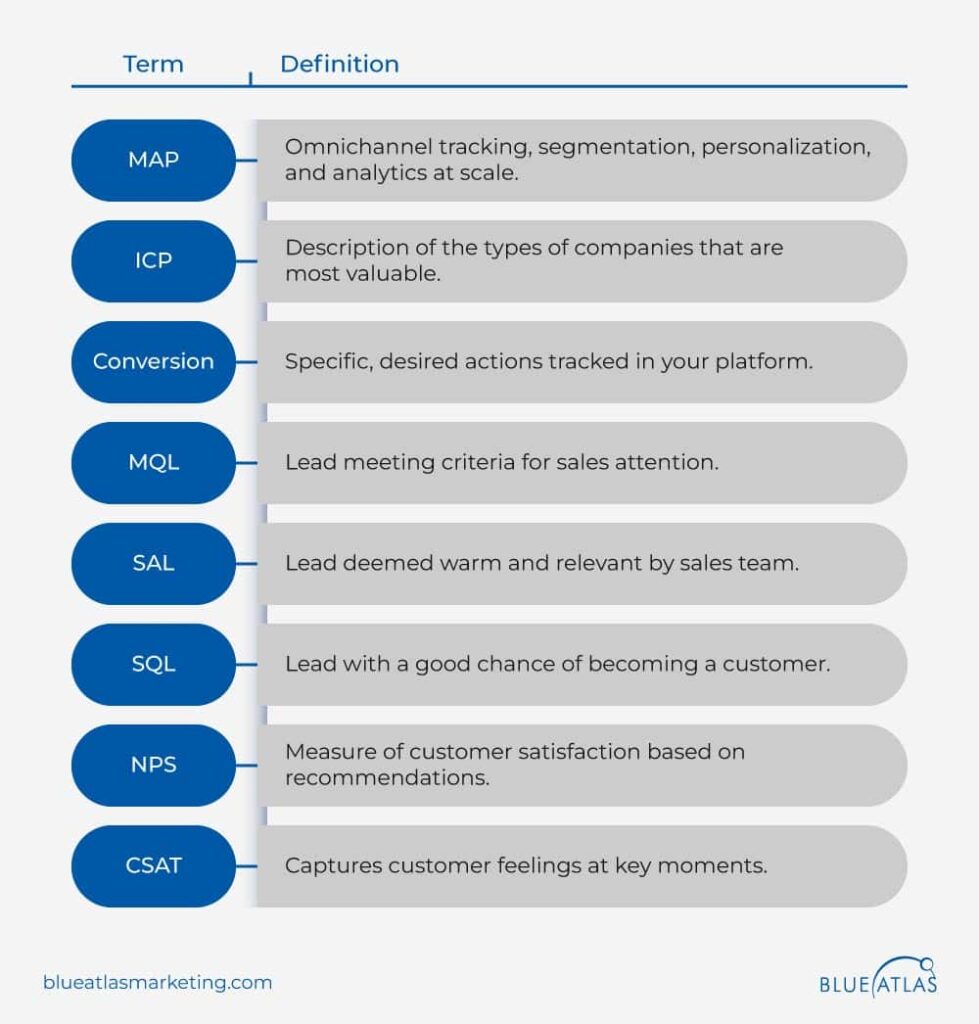
- Open Rates: Measure the percentage of recipients who open your emails.
- Click-Through Rates (CTR): Track the percentage of email recipients who click on links within your email.
- Conversion Rates: Monitor the rate at which leads complete a desired action, such as purchasing, signing up for a newsletter, or filling out a form.
- MQL (Marketing-Qualified Leads): Leads that meet specific criteria indicating they are ready to be passed to the sales team.
- SAL (Sales-Accepted Leads): Leads that the sales team agrees are worth pursuing.
- SQL (Sales-Qualified Leads): Leads that the sales team deems highly likely to become customers.
- NPS (Net Promoter Score): This measure measures customer satisfaction by asking how likely customers are to recommend your company to others.
- CSAT (Customer Satisfaction Score): This score captures customer satisfaction at critical points in their journey, such as after a purchase or interaction with customer support.
What are some outdated marketing automation practices?
Outdated marketing automation practices include:
- Sending generic email blasts without personalization leads to low engagement and high unsubscribe rates.
- Neglecting customer segmentation results in irrelevant messaging and decreased campaign effectiveness.
- Over-automating interactions make communications feel impersonal and robotic.
- Ignoring data analysis prevents you from understanding what works and what needs improvement.
- Relying solely on automated messages limits the effectiveness of your email marketing and lead flow.
Following these marketing automation best practices can significantly boost your B2B marketing efforts, increasing engagement, conversions, and overall effectiveness. By understanding your target audience, setting clear objectives, gathering and utilizing customer data, and continuously refining your campaigns, you lay the groundwork for a successful marketing automation strategy. Embrace these principles to streamline your marketing tasks, enhance your reach, and achieve remarkable results.
Want to Implement Marketing Automation?
Ready to elevate your marketing automation game? Contact Blue Atlas Marketing today to explore the latest marketing automation trends and best practices. Our skilled team can help streamline your operations and achieve your business goals. Let us help you harness the power of marketing automation to fuel growth and success for your company.


